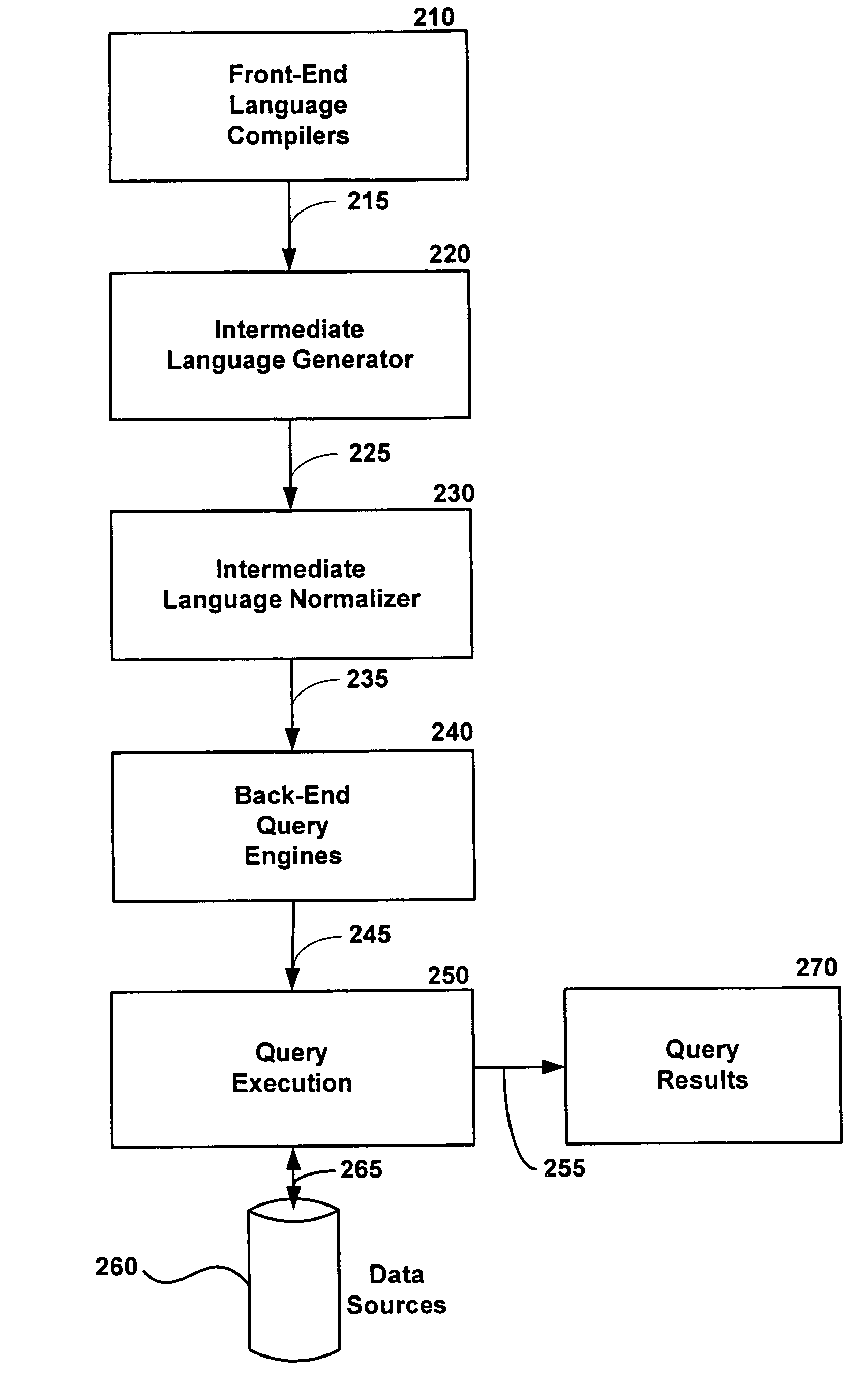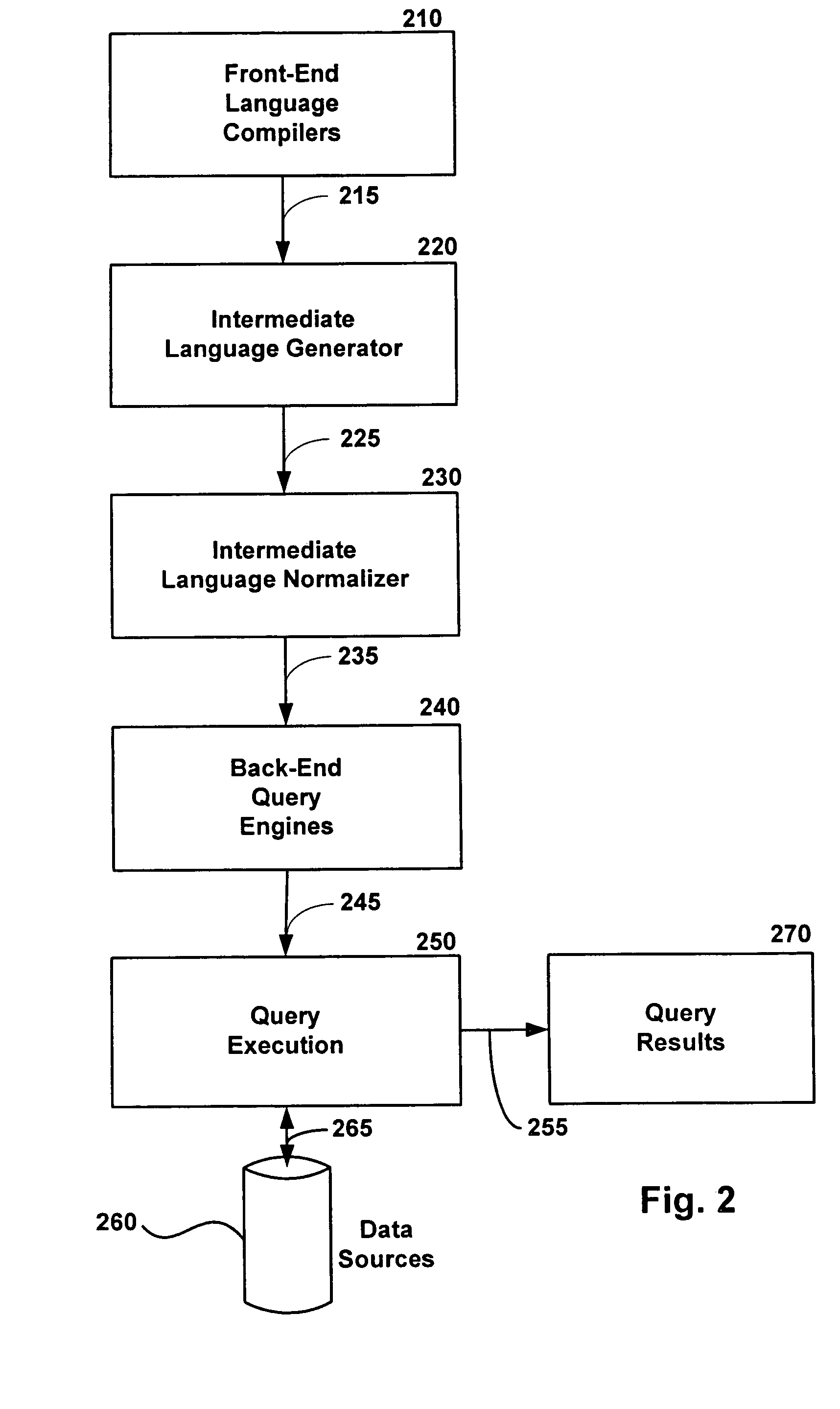Query intermediate language method and system
a query intermediate and language technology, applied in semi-structured data querying, program control, instruments, etc., can solve the problems of implementing virtual xml, all of the work occurring in the xml query engine instead of being performed, and other sources of data that may not be so easily described
- Summary
- Abstract
- Description
- Claims
- Application Information
AI Technical Summary
Benefits of technology
Problems solved by technology
Method used
Image
Examples
Embodiment Construction
Overview
[0025]The XML intermediate language of the present invention explicitly represents the meaning or semantics of a query. The XML intermediate language is termed a query intermediate language (QIL).
[0026]The XML intermediate language QIL provides (1) a uniform representation of both the XML query and the XML view, thereby greatly simplifying the query / view composition problem and (2) treating all views as “virtual XML” greatly simplifies the system's interfaces. Instead of having one API for every possible language and data model, all the APIs can share a common data model; the operators of the XML intermediate language QIL.
[0027]QIL also addresses a well known compiler problem. Normally, with a language, compilers need to implement M front-end languages over N back-end target machines. If each pairwise combination is implemented, M times N compiler implementations are needed to cover the required combinations. However, if the two are decoupled by introducing a common intermed...
PUM
 Login to View More
Login to View More Abstract
Description
Claims
Application Information
 Login to View More
Login to View More - R&D
- Intellectual Property
- Life Sciences
- Materials
- Tech Scout
- Unparalleled Data Quality
- Higher Quality Content
- 60% Fewer Hallucinations
Browse by: Latest US Patents, China's latest patents, Technical Efficacy Thesaurus, Application Domain, Technology Topic, Popular Technical Reports.
© 2025 PatSnap. All rights reserved.Legal|Privacy policy|Modern Slavery Act Transparency Statement|Sitemap|About US| Contact US: help@patsnap.com



